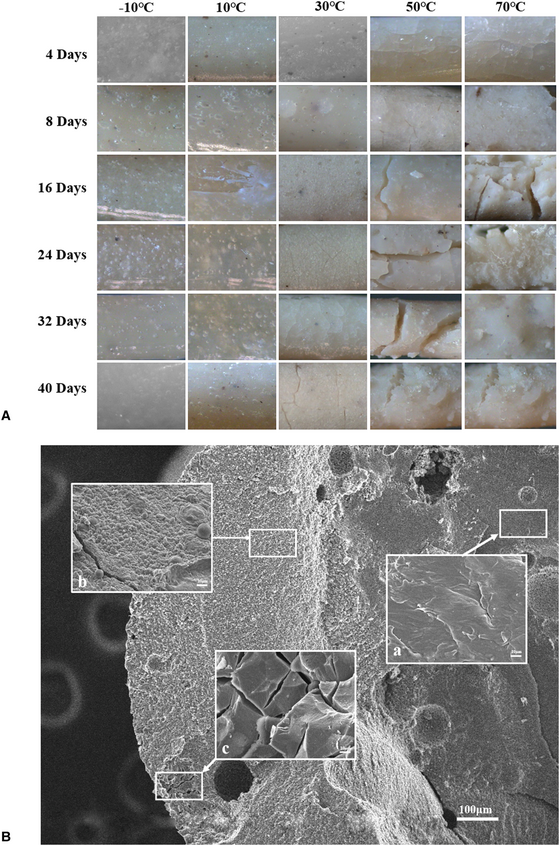Crossref Citations
This article has been cited by the following publications. This list is generated based on data provided by
Crossref.
Arzhakova, O. V.
Arzhakov, M. S.
Badamshina, E. R.
Bryuzgina, E. B.
Bryuzgin, E. V.
Bystrova, A. V.
Vaganov, G. V.
Vasilevskaya, V. V.
Vdovichenko, A. Yu.
Gallyamov, M. O.
Gumerov, R. A.
Didenko, A. L.
Zefirov, V. V.
Karpov, S. V.
Komarov, P. V.
Kulichikhin, V. G.
Kurochkin, S. A.
Larin, S. V.
Malkin, A. Ya.
Milenin, S. A.
Muzafarov, A. M.
Molchanov, V. S.
Navrotskiy, A. V.
Novakov, I. A.
Panarin, E. F.
Panova, I. G.
Potemkin, I. I.
Svetlichny, V. M.
Sedush, N. G.
Serenko, O. A.
Uspenskii, S. A.
Philippova, O. E.
Khokhlov, A. R.
Chvalun, S. N.
Sheiko, S. S.
Shibaev, A. V.
Elmanovich, I. V.
Yudin, V. E.
Yakimansky, A. V.
and
Yaroslavov, A. A.
2022.
Polymers for the future.
Russian Chemical Reviews,
Vol. 91,
Issue. 12,
p.
RCR5062.
Yang, Fan
Zhang, Caili
Ma, Zhirui
and
Weng, Yunxuan
2022.
In Situ Formation of Microfibrillar PBAT in PGA Films: An Effective Way to Robust Barrier and Mechanical Properties for Fully Biodegradable Packaging Films.
ACS Omega,
Vol. 7,
Issue. 24,
p.
21280.
Sun, Tao
Bian, Junxia
Wang, Yangyang
Hu, Jian
Yun, Xueyan
Chen, Eerdunbayaer
and
Dong, Tungalag
2023.
One-Step Synthesis of Poly(L-Lactic Acid)-Based Soft Films with Gas Permselectivity for White Mushrooms (Agaricus bisporus) Preservation.
Foods,
Vol. 12,
Issue. 3,
p.
586.
Yi, Ying-Chen
and
Ng, I-Son
2023.
Toward Low-Carbon-Footprint Glycolic Acid Production for Bioplastics through Metabolic Engineering in Escherichia coli.
ACS Sustainable Chemistry & Engineering,
Vol. 11,
Issue. 2,
p.
815.
Wei, Chang
Guo, Peng
Lyu, Mingfu
Wang, Bo
Li, Chao
Sang, Lin
and
Wei, Zhiyong
2023.
High Barrier Poly(Glycolic Acid) Modified Poly(Butylene Adipate-co-terephthalate) Blown Films and Accelerated Ultraviolet Degradability Evaluation.
ACS Applied Polymer Materials,
Vol. 5,
Issue. 5,
p.
3457.
Lin, Zhenyu
Chen, Hao
Xu, Jiawei
Wang, Jie
Wang, Huijing
Huang, Shifen
and
Xu, Shanshan
2023.
A Review of the Release Profiles and Efficacies of Chemotherapy Drug-Loaded Electrospun Membranes.
Polymers,
Vol. 15,
Issue. 2,
p.
251.
Wang, Yanning
Hou, Boyou
Huang, Liping
Li, Bingjian
Liu, Shi
He, Mingyang
Chen, Qun
and
Li, Jinchun
2023.
Study on Properties and Degradation Behavior of Poly (Adipic Acid/Butylene Terephthalate-Co-Glycolic Acid) Copolyester Synthesized by Quaternary Copolymerization.
International Journal of Molecular Sciences,
Vol. 24,
Issue. 7,
p.
6451.
Yan, Xiaoyun
Chen, Qiqing
Zhang, Zhuolan
Fu, Ye
Huo, Zhanbin
Wu, Yan
and
Shi, Huahong
2023.
Chemical features and biological effects of degradation products of biodegradable plastics in simulated small waterbody environment.
Science of The Total Environment,
Vol. 904,
Issue. ,
p.
166829.
Arel, Isik
Ay, Ayse
Wang, Jingyi
Gil-Herrera, Luz Karime
Dumanli, Ahu Gümrah
and
Akbulut, Ozge
2023.
Encapsulation of Carbon Dots in a Core–Shell Mesh through Coaxial Direct Ink Writing for Improved Crop Growth.
ACS Sustainable Chemistry & Engineering,
Vol. 11,
Issue. 38,
p.
13939.
Matsuno, Hisao
Eto, Reiki
Fujii, Misato
Totani, Masayasu
and
Tanaka, Keiji
2023.
Effect of segmental motion on hydrolytic degradation of polyglycolide in electro-spun fiber mats.
Soft Matter,
Vol. 19,
Issue. 38,
p.
7459.
Li, Chenyang
Meng, Xin
Gong, Weiguang
Chen, Shiyuan
Wen, Wei
and
Xin, Zhong
2024.
Hydrolytic Aging of Degradable Poly(glycolic acid) at Different Temperatures.
Industrial & Engineering Chemistry Research,
Vol. 63,
Issue. 4,
p.
1864.
Muthukumar, Janani
Kandukuri, Venkata Aditya
and
Chidambaram, Ramalingam
2024.
A critical review on various treatment, conversion, and disposal approaches of commonly used polystyrene.
Polymer Bulletin,
Vol. 81,
Issue. 4,
p.
2819.
Asri, Nur Asnani
Sezali, Nur Atirah Afifah
Ong, Hui Lin
Mohd Pisal, Mohd Hanif
Lim, Ye Heng
and
Fang, Jian
2024.
Review on Biodegradable Aliphatic Polyesters: Development and Challenges.
Macromolecular Rapid Communications,
Vol. 45,
Issue. 23,
Fu, Ye
Zhu, Liang
Liu, Bo
Zhang, Xi
and
Weng, Yunxuan
2024.
Biodegradation behavior of poly (glycolic acid) (PGA) and poly (butylene adipate-co-terephthalate) (PBAT) blend films in simulation marine environment.
Polymer,
Vol. 307,
Issue. ,
p.
127295.
Cui, Huashuai
Zhang, Zetian
and
Huang, Qing
2025.
Enhancing degradation resistance of polyglycolic acid through stereocomplex polylactic acid integration: A novel “stereo-lock” approach.
Polymer,
Vol. 321,
Issue. ,
p.
128088.
Kim, Jeong F.
and
Thi, Hai Y.N.
2025.
Encyclopedia of Green Chemistry.
p.
131.
Kogje, Mithilesh
Satdive, Ajinkya
Mestry, Siddhesh
and
Mhaske, S. T.
2025.
Biopolymers: a comprehensive review of sustainability, environmental impact, and lifecycle analysis.
Iranian Polymer Journal,




